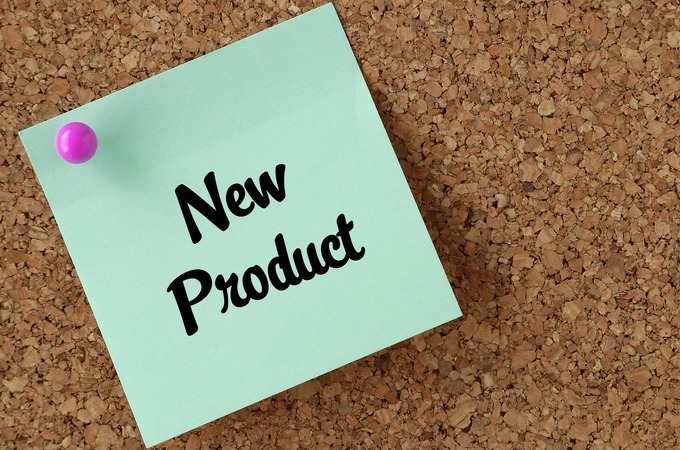Amid the excitement of a new product launch — or even earlier in the product development cycle — it’s all too possible for a key step or two to get lost in the shuffle. Unfortunately, skipping even a relatively minor step can create a big hiccup in your launch, and can potentially create problems with your product and sales down the line. Remember, a product launch is much more than just “launch day” itself. The entire process — from concept to manufacturing and distribution — is all part of launching a new product. That’s why it’s key to take advantage of the resources at your disposal, in order to provide as many safeguards as possible against neglecting a critical launch step. As one of those resources, review the product launch checklist below:
- Do you know who your target customer is? Understanding how to launch a new product is one thing, but knowing who you’re launching (or selling) it to is just as important. Having a key buyer in mind (whether at an individual level or in a bigger-picture sense) can drive the direction of many aspects of your product launch: how you’re positioning it, who you’re marketing it to (if you choose to have a marketing plan), how you’re distributing it, and more. The target buyer should also play a part in the development of your product. What might seem like a great idea to you won’t go anywhere if a larger market doesn’t exist.
- Have you determined your distribution channels? In launching and selling a product, one thing you want to avoid is having inventory with nowhere to go. If you don’t determine a distribution plan as part of your new product launch plan, you may find yourself in just such a situation. If you expect to be selling in smaller quantities, your distribution plan might be as simple as the U.S. Mail or other carriers. Though in larger quantities, you’ll need to draw up a full-blown fulfillment strategy to get your orders out to buyers.
- Have you developed and fine-tuned a sales strategy? For instance, will you sell through your own website? What about other websites? Will you have a salesperson to land bigger accounts, or will you handle those aspects yourself? Launch day can sneak up on you when you’re heavily involved in developing and manufacturing your process, and without a well-defined sales strategy (and infrastructure, if necessary), you may be fighting an uphill battle almost from day one.
- Have you conducted quality testing with your product? Ideally, you prototyped and tested your product at every stage of the development cycle, zeroing in on any potential issues with its manufacture and operation. It’s also critical to test the final product prior to launch, to be sure that everything is in place. Do the pieces look the way they need to? Are they packaged correctly? Most importantly, do they operate safely and as intended?

- Have you conducted user testing with your product? Quality testing shouldn’t be the only type of testing that you carry out. Testing your product with real users — ideally at several points in the production process — can help answer many questions about its launch, and it’s the best way to escape the confines of your own assumptions and presuppositions. Even just sharing your idea with co-workers or friends is an ideal first step in “user testing.” Their opinions can help you gauge potential interest in your product. What’s more, throughout the process, prototyping — especially with services like 3D printing, which is fast and comparatively inexpensive — is important to provide a hands-on experience with the product. Here, you can see whether users will know how to operate your product, and whether it fulfills its intended function.
- Did you iterate and prototype your product based on your findings? Without exception, a new product should not be launched without extensive prototyping and testing (as described above — though not limited to those factors). Think of prototyping as your best ally against an unsuccessful product — it can help you determine whether your product will do what it’s supposed to do, whether people will like its appearance, whether it will function safely, and more. There are not many questions that you might have about your product that prototyping can’t answer, so those steps should be taken and focused on throughout the process.
- Did you research different manufacturing methods for your product? This step must be taken well before launch day, but it’s an important component of the overall development of your product, and should be part of any “big-picture” new product launch plan. Depending on the type of product you’re launching, and a number of other factors — including your product’s design, the required quantities you’ll be manufacturing, any material considerations, and more — you may have more manufacturing options at your disposal than you thought. While methods like injection molding may be right for some products and quantities, other processes like 3D printing may be able to provide similar quality and development efficiency at a much lower cost.

- Did you consider different types of material for your product? Again, a step that obviously can’t wait until launch day, but a key consideration in launching a product just the same. A precursor of this step is knowing exactly the performance specs that your product must meet, like temperature resistance, extreme conditions, hardness or pliability, and more. Once you have a firm grasp on those requirements, you potentially have more leeway to test different materials, including ones that might be able to lower your production costs.
- Do you know how you’ll scale your product or company? This is a very good step to have to think about, because it means that your product is doing well! While you may not want to get ahead of yourself, it’s important to know how you’ll increase your production and sales as necessary, so that you won’t miss any opportunities that may be presented to you.
Be sure to consult this list often throughout the development and launch of your new product, to assure you’re covering your bases every step of the way — and more importantly, giving yourself the best chance at a successful product launch.





